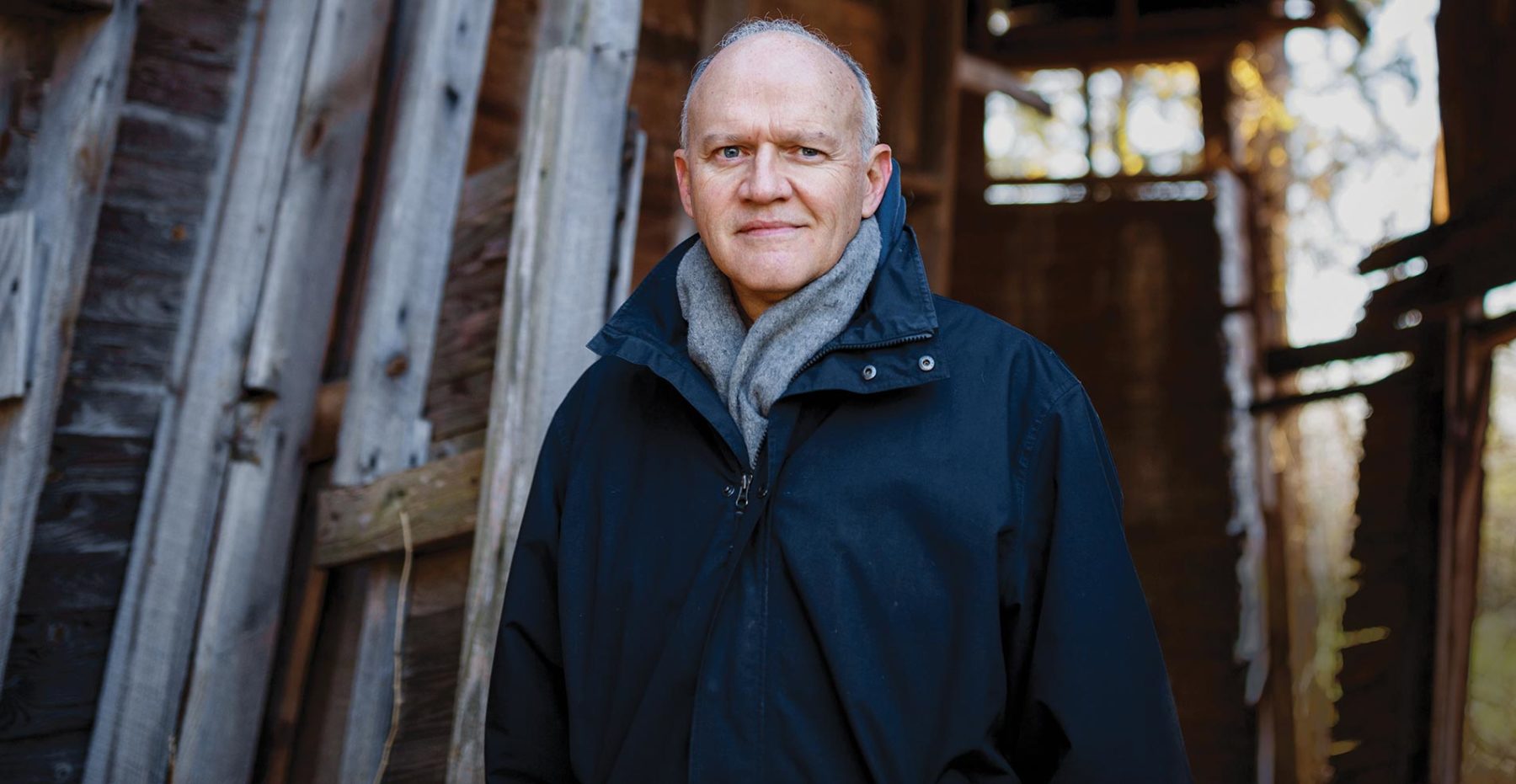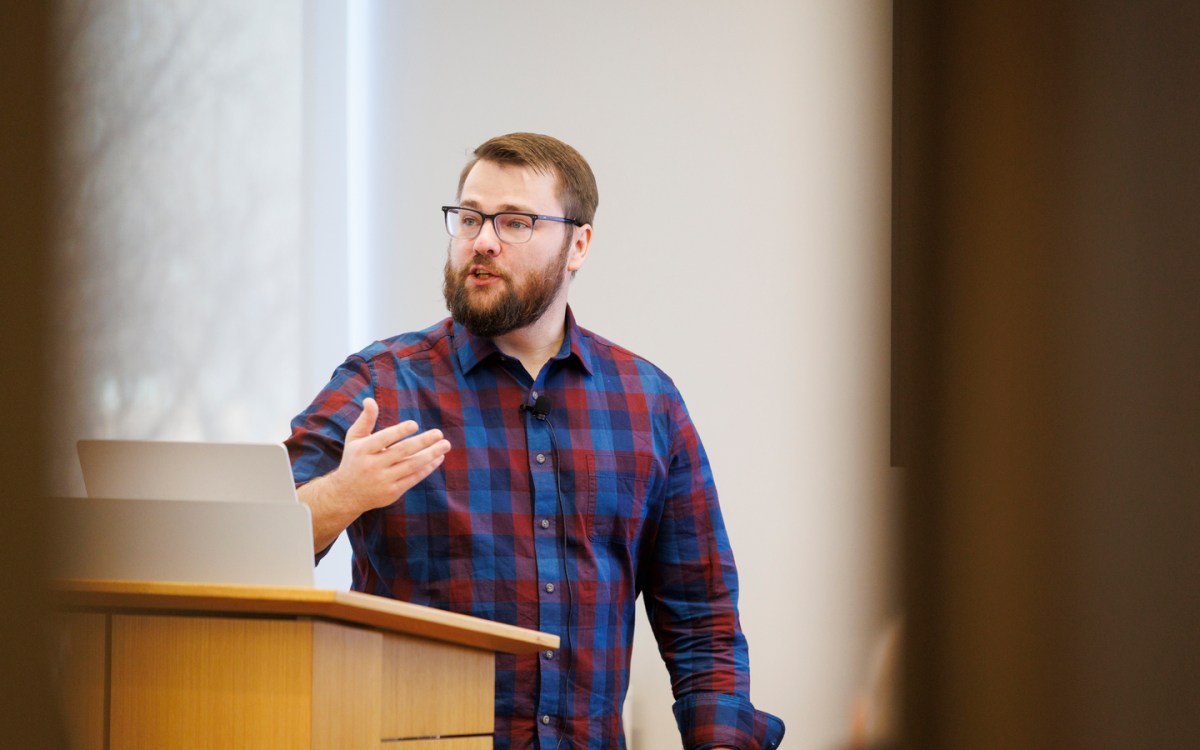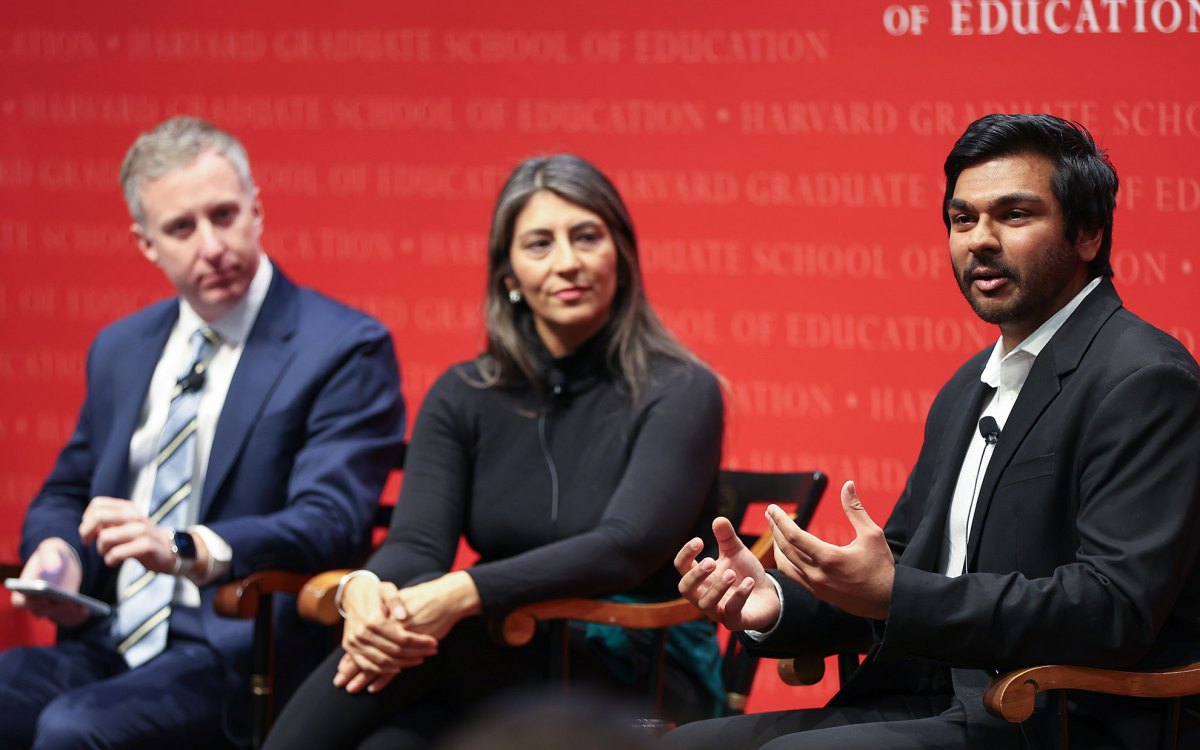
Photo courtesy of Melissa Golden
An ounce of prevention
“Give [kids] all the information, let them make up their own minds, and they make the right decisions.”
True to his home state’s official song, Georgia is always on Jim Langford’s mind.
“I can’t remember a time when I was not involved in elections, public policy, or community improvement,” Langford, M.B.A. ’84, said. “I began formally doing that kind of work when I was 19 years old, appointed by Gov. Jimmy Carter to serve on a state commission on public education.”
In the decades since then, Langford has run organizations focused on preserving Native American archaeological sites, revitalizing landmark Jekyll Island, creating and expanding greenspace in urban Atlanta, and improving hiking and biking trails.
So in 2008, when a childhood friend asked for his help bringing a campaign to the state to battle Georgia’s methamphetamine epidemic, he couldn’t say no, but he also knew he had a pretty packed schedule. “Ok, tell you what,” he told his friend, “I’ll give you a year.”
Laughing, he said, “That was now 11 years ago.”
The Georgia Meth Project, which also promoted public-policy initiatives and community outreach, ran graphic television ads highlighting the physical and psychological toll meth takes on its users. Images of gaunt, hollow-eyed addicts covered in sores changed perceptions about meth among Georgia’s youth.
“When we first started, 35 percent of the kids in Georgia thought there was little or no risk in trying methamphetamine,” said Langford.
“Can marketing help halt the heroin Epidemic?”
transcript
Transcript:
Narrator:In 2008, Jim Langford became the executive director of the Georgia Meth Project, a non-profit that blanketed his native state with a graphic, disturbing ad campaign dedicated to unselling a drug that was destroying individuals and families. In recent years, as the opioid crisis swept the country, the organization shifted to a broader focus, rebranded as the Georgia Prevention Project. Now Langford wants to stem the spread of opioids with those same weapons he used to stem the spread of meth: targeting advertising and marketing of stark depictions of the harsh reality of drug use. On this episode of Skydeck, Langford speaks with Associate Editor Julia Hanna about how to craft these messages, how effective they can be, and why a former tech entrepreneur and Coca-Cola marketing executive wanted to take on the opioid crisis.
Julia Hanna: Jim, your organization, the Georgia Prevention Project, the name of it says it all. Getting people who are addicted to drugs to stop taking them is really difficult. And using scare tactics to get them from starting is nothing new, whether it’s smoking or alcohol or drugs. Back in the ’80s, we had the war on drugs, and anyone who’s of a certain age can remember the slogan, “Just say no.” And there was also this ad from 1987.
“OK, last time. This is drugs. This is your brain on drugs. Any questions?”
That ad, which featured a couple of fried eggs, was paid for by Congress, and there was quite a bit of criticism of it. Some people even made fun of it, said things like can have a side of hash browns with that, sort of thing. But you fast forward 30 years ahead and you have something a little different from the Georgia Meth Project.
Your ads from 2009 include things like a print ad that says, “No one thinks they’ll try to tear off their own skin. Meth will change that.” And it shows an image of a white saint with a razor blade in it and blood. There are also about 20 radio spots that ran, and one of them was just called, “Devin.”
– Me and my brother were walking down a trail, and we’re both smoking some meth. He said something to me, and it set me off. And I picked up a tree limb. I started hitting him with it. Busted his head open. I think it broke one or two of his ribs. Broke his nose.
I didn’t think nothing about it. I just left him laying there. I turned it into a horrible person, I guess. My name is Devin. I started doing meth when I was 10 years old. Meth affected my friendship with him pretty bad. He won’t talk to me any more.
Me and my brothers don’t talk. Me and my parents don’t talk. All my family won’t have anything to do with me. I didn’t know at all that it was going to be destructive as it was. No one gave me any kind of warning. I wished they had. But the fact you start, there’s just no stopping. You’ll do anything.
It’s a real powerful drug.
– Brought to you by the Meth Project.
Now you’re fund raising to create a similar campaign that’s focused on preventing the use of opioids. Can you just talk a little bit about the meth campaign and how you’re going to transition that to preventing the use of opioids?
Langford: Sure. And I think it’s important to recognize, as you mentioned, the origin of campaigns back to the 1980s and even earlier. People were trying to be cute and use cute slogans and things they thought would be catchy. And then at some point, people decided, well, gee, people were making fun of those ads. Kids wanted something more direct, actually.
And so the Siebel Foundation did a good bit of work in creating the Meth Project back in 2005, and that was created by Tom Siebel. Tom Siebel was a marketing guy who had been the number two person at Oracle and had created his own company. And he said, I’m a marketing guy. I think I can figure out how to un-market meth, and he went to work doing that. And he spent $25 to $30 million of his own money to figure that out and to create a campaign.
And so some of those ads were scary, but that was not their intent. Their intent were to be reality based, and we didn’t have to make up anything about methamphetamine to make it scary. People do try to tear their own skin off. They do wacky things because they are sleep deprived. Just sleep deprivation alone can make you crazy, and so this meth-induced psychosis is a real thing.
And so we launched that campaign in Georgia in 2010, heavy saturation campaign—26,000 radio spots 23,000, TV spots, and 588 billboards. And the goal of that campaign was for 80% of those teens to be exposed one of those ads five times a week. Well, you do that for you know 62 weeks and you’ve done some pretty heavy saturation work.
Now with the opioids, the pills, we think they’re going to take care of themselves, meaning prescriber limits are coming down, the way that doctors are prescribing is changing, CDC have got guidelines, lawsuits against these pharmaceutical companies and the distributors. All those things are going to be successful. They’re already having an effect.
But the bad news is that with younger audience is increasingly seeing heroin as OK, that heroin is cool for some reason. 20% of them think there is little or no risk in trying heroin, and 15% think it’s OK to use heroin on a regular basis. Well, that’s 150,000 180,000 kids in Georgia alone that are at risk of using heroin. And with heroin being so available and inexpensive, then we’ve got a real potential nightmare on our hands. We’ve already got very high overdose death rates.
Hanna: Do you think in developing these ads, I know you’re still fund raising for them and you’re not into this process yet, but can you talk a little bit about the research involved in creating these ads and what that will look like?
Langford: Yes. I think, again, it’s important to note that what kids want, they want something compelling, I mean, first of all, just to look at. They get bombarded by 5,000 or 6,000 or 7,000 messages a day in subtle ways, not so subtle ways. And it’s everything from things they hear on the radio or other music they’re listening to T-shirts people are wearing to video games to things they’re seeing online.
And so to cut through all of that, again, that was one of the goals way back even in 2005. And so to do that, you’ve got to be creative. Yes, you’ve got to be compelling. Yes, it might include some things that are scary, but not totally off base.
At the same time, you’ve got to be credible. I mean, these kids are so smart. They’ve seen so much. No point in sugar coating anything. Tell it to them straight. That’s what they want. They want to dig into the details.
And then they will feel empowered to make decisions on their own. Tell me what meth-induced psychosis is. Show me how the neuron thing works in the brain where dopamine gets activated or mu receptors.
What does that mean? It’s remarkable. Even kids as young as 12, 13, 14 want to dig into those kind of details. And once they do and once you show them in very factual ways what’s going on, then they’ll say, OK, now I feel good. Now I know what I’m going to do.
So that’s the kind of research that we’ve got to work on with this heroin campaign.
Hanna: Last week the White House introduced four ads that are focused on prescription opioids, and they feature the stories of four people who purposely hurt themselves in order to get more of the prescription drugs. For example, a person who is lying underneath the car kicks the jack out. The car falls on them, and there’s text that says that this person who is from Maine broke his back so that he could get more prescription opioids. How effective do you think those ads are?
Langford: Well, they certainly cut through other messages that kids are seeing every day. Now what you need to recognize is those ads are directed at that second age group of 18 to 24-year-olds. So they’re going after the young adults instead of the teenagers.
Now they’re hoping to have what they call a halo effect that also affects even some younger kids who are watching those ads, and there’s no doubt about that. Yes, they are trying to be compelling with those ads. They are focused on the opioids, the pills themselves instead of on heroin, and I hope they’re successful in reaching a number of kids or young adults with those ads. But remember, an increasing percentage of kids now are going straight to heroin and are not starting with the pills first. That’s a new trend. That’s only started in the past year or so.
We used to say a year ago, two years ago that 80% of the kids are people who were using heroin got their first by using the pills. Now that number is down around 50% or 60%. It’s coming down, which means kids are finding, well, I can go straight to heroin. I don’t have to start with the pills. Somebody said this is really fun. It’s really cool. So we’ve got to make heroin uncool. We’ve got to make it un-fun, and that’s one of our big goals.
Hanna: Now some have criticized the efficacy of campaigns like the one that you ran with the Georgia Meth Project saying that it’s very difficult to prove success and to attribute success to particular ads. How do you measure success?
Langford: Well, we saw a couple of key statistics. One was how do you perceive the risk of trying meth once or twice. And before we ran the first ad, 35% of the kids in Georgia thought there was little or no risk in trying meth once or twice. And that was a big sample size. I mean, these were very scientific surveys that we did—big, outside organizations that we used to get that information—35% of the kids thought there was little or no risk in trying meth.
23% thought there was some benefit to trying meth. Help me lose weight. Help me study better. Help me with boredom. Crazy stuff. Again, something some 18-year-old told a 14-year-old, probably. So once we began to run the ads, and again, these are heavy—it doesn’t mean just one ad that a kid happens to see. No, it means heavy, heavy saturation in multiple ways—visually, over the radio, billboards, websites with lots and lots of information, work in classrooms—we saw 80,000 kids in classrooms—and then we saw those numbers start to change.
So the 35% that thought there was little or no risk in trying meth, in the very first year, that went down to 27%. Well, within two more years, we’ve got it down to 11%. Now, I challenge somebody else to show me what else happened during that same period that made those attitudes change that dramatically? There wasn’t anything else. Ours was the only big campaign out there.
Now, interestingly, there were a couple of areas of Georgia where we didn’t run any ads. We didn’t have enough money. They were hard to get to, some rural areas, those kinds of things. We didn’t plan for those to be control areas on our survey work, but that’s what they’ve become. And the results are dramatically different in those geographic areas where we never ran any ads, where we never did anything.
Hanna: Jim, as part of your role in SARA, which is a research group that you started, you’ve been working with the State of Georgia to help them shape their strategic plan. Can you talk a little bit about how that’s going?
Langford: That organization is the Substance Abuse Research Alliance that I created, and it includes all the medical schools in Georgia, all the schools of public health, State agencies, any university researchers, graduate students or full professors, doesn’t make any difference. We’ve made it very open for people to come in and participate in that organization.
The first big project that we embarked on was to create a white paper for Georgia outlining what should the State be doing. What’s should the State agencies be doing, what should the Georgia legislature be doing, both budget wise and legislatively. And we were very happy that when the first few months of releasing that white paper, George passed two key pieces of legislation that we recommended.
One was making naloxone available over the counter. That’s the overdose reversal drug. Wanted to give wide availability to that drug. And then the second thing that we recommended was a substantial improvement in what’s called the PDMP, that’s a Prescription Drug Monitoring Program, an online piece of technology that allows pharmacists and doctors and law enforcement to monitor how many prescriptions are being made out there, who’s getting all these prescriptions, where are they going, what’s happening with all the opioids out there in the world. That has been strengthened dramatically.
Second phase of what we’ve done is an upgraded white paper with lots more pieces of legislation recommended, lots more things that agencies should be doing, and that’s going very well. Another key piece of what we recommended the Department of Public Health has embarked on is a strategic plan. You’d be surprised but there are several States out there with big problems who don’t really have a big plan on how to attack this problem of the opioid and heroin epidemic.
Georgia is not one of the worst States. The worst States are Ohio, Kentucky, West Virginia, Vermont, New Hampshire, Rhode Island, even Massachusetts. And Georgia is in the next tier behind those. So it’s like a category 4 hurricane that’s a couple of days off the coast about to hit us, and we’re trying desperately to be sure that we’re prepared when that happens.
Meanwhile—and Georgia is doing well with that strategic plan. That plan will go to the governor’s office sometime in the first part of July for him to sign off on, and then the State agencies need to get to work and will on implementing that plan. And that will be a multi-month process to implement the plan and make sure that everybody is up to date on that.
We had 1,426 overdose deaths in Georgia in 2016. We think it was anywhere from an 18% to 20% increase on top of that for 2017. We don’t have the numbers yet. So the numbers are still going up and going up fast. We hope we’re going to start to see that turn around and start coming back down once we get a lot of these things in place.
Hanna: And you’ve been involved in this work for about 10 years now, which is quite a bit longer than you probably anticipated.
Langford: That’s right.
Hanna: Why do you do it?
Langford: Well, it’s a good question. I first got started in 2008 or ’09 and got a call from Lee Shaw, who is a friend of mine and part of the Shaw Industries family. He was from Northwest Georgia like I was in some rural areas. And he said, I want you to come help me with this methamphetamine campaign.
We’re bringing this big campaign to Georgia. He’d been out in the Western States, and I said, gee, Lee, I just can’t do that. I’m booked up with two or three other things, they’re mostly land conservation work and some other things, and I just can’t. But I want to hear more about what you’re doing.
I said let’s talk for about 30 minutes. So he said great. Well, I say that 20 minutes into the 30 minutes, I went, oh, my gosh. I’m going to have to quit everything else. I might have to work on this. Lee said it was only 10 minutes into the conversation. Whatever it was, I knew pretty quickly that oh, my gosh, I knew the problem was bad. I did not know there was a campaign that was possible. It would be this good, and I was intrigued.
And I said, OK, Lee, I’ll give you a year to work on it. Well, that was, again, 10 years ago. So what keeps me going, one is the challenge to continue to improve and find ways to make these campaigns good and effective. And as the problem changes and morphs, then you’ve got to change your methods. The other thing keeps me going are just the fact that you’ve got a network of people out there who are also working on this, and it’s all a big team.
Some people are in treatment recovery. My organization is in prevention. Some people are in law enforcement, on and on, legislative activity, agents, State agencies, we’re all part of a team, and I just can’t see walking away from the team. And I just feel like I got a little more left in the tank, a little more left to do.
With the opioid crisis mushrooming, executive director Langford’s nonprofit morphed into the Georgia Prevention Program. But the new problem came with several complicating wrinkles.
“It was relatively easy for us to go after meth. There is no redeeming reason for you to touch that stuff. With pain pills it’s a whole different story,” Langford said.
Many people become hooked on opioids through legal prescriptions for medical conditions. Often, he said, opioids “feel safe” because they come from medical professionals. And assigning blame becomes more thorny when the parties potentially include “the pharmaceutical industry, the FDA, and even doctors.”
“A woman told this story at a big forum at the attorney general’s office here in Georgia,” Langford said. “Her son played football in high school, went to a small college in Pennsylvania to play football, broke his hand, and the doctor gave him some pills. They didn’t think much about it. The next year he dislocated his shoulder. They gave him some more pills.
“Within three years the kid’s back at home and telling his parents, ‘I’ve got a drug problem.’ After relapsing, going into recovery, and relapsing, he died of an overdose. The mother found out that this team’s doctor was writing him prescriptions for two years straight.”
Another complicating factor: Reaching young people with anti-drug messages has become more complicated as they spend their time with more types of screens that just television.
“We had to do online advertising; we had to go social-media-heavy; and now we’re exploring some new technologies that are mobile-app-related,” he said.
The group has also created programs for students and teachers to educate middle school and high school students about the dangers of opioids.
“You’ve got to empower them. Give them all the information and let them make up their own minds, and they make the right decisions,” he said.
It’s been an uphill push, but Langford and the Georgia Prevention Project believe they are making headway.
“The number of prescriptions [for opioids] is coming down because of [federal Centers for Disease Control and Prevention] guidelines,” Langford explained. “Doctors are listening; the lawsuits against the manufacturers are helping. They’re putting a big chilling effect on the number of pills, and that’s terrific. And we’re building education on the other side.”
This story is part of the To Serve Better series, exploring connections between Harvard and neighborhoods across the United States.




